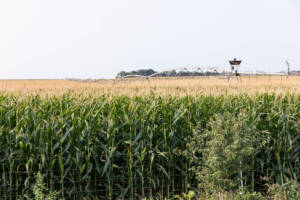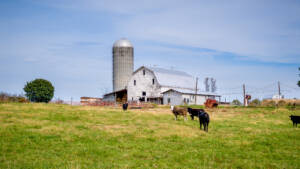EPA Data Shows Positive Impact of Conservation Efforts on Emissions
Daniel Munch
Economist
Micheal Clements
News Service Editor, NAFB

photo credit: AFBF Photo, Mike Tomko
Conservation efforts and market-based incentives are helping agriculture reduce the industry’s greenhouse gas emissions, according to the EPA. Micheal Clements shares more.
Clements: New data released this month from the Environmental Protection Agency shows agriculture decreased its greenhouse gas emissions in 2022. The EPA recently released the Inventory of U.S. Greenhouse Gas Emissions and Sinks: 1990-2022. American Farm Bureau Federation Economist Danny Munch explains the results.
Munch: Overall greenhouse gas emissions from all sources increased by 1.3 percent between 2021 and 2022, though agricultural emissions dropped 1.8 percent, and that’s the largest decrease of any economic sector.
Clements: 2022 marks the lowest U.S. agricultural greenhouse gas emissions since 2012. The EPA categorizes agricultural emissions by crop cultivation, livestock and fuel combustion that occurs in the industry.
Munch: Crop cultivation emissions were down six million metric tons from 2021. When we look at livestock, they were down 2.1 percent, or six million metric tons from 2021. Emissions from fuel combustion in ag were down one million metric tons, or 1.2 percent.
Clements: The data also shows the productivity gains in agriculture.
Munch: While the U.S. population has grown by over 80 million since 1990, per capita agriculture emissions have dropped 20 percent, and when you adjust that for total productivity gains, it drops to 25 percent over the 20-year period.
Clements: Learn more on the Market Intel page at fb.org. Micheal Clements, Washington.
What We're Saying

Agriculture Emissions Fall to Lowest Levels in 10 Years
Apr 15, 2024
READ MORE

AGDAILY: Agriculture Emissions are at Their Lowest in 10 Years
Apr 15, 2024
READ MORE

Biofuel and Ag Groups Call on EPA to Issue E15 Emergency Waiver
Mar 26, 2024
READ MORE

FACA Applauds USDA for Taking Steps to Improve GHG Accounting
Jul 11, 2023
READ MORE
